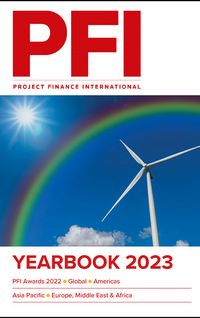Transportation infrastructure growth faces an inflection point heading into 2023, with the recent years' stimulus and recovery-fuelled growth expected to slow dramatically against the economic backdrop of a looming recession. While a recession may slow the recovery to pre-pandemic volumes and revenues, infrastructure remains a very stable sector overall. By Gregory Remec, Fitch Ratings.
The US Fed's track record of engineering soft landings after periods of high inflation has been spotty, and Fitch economists project today's environment of rate-tightening will end with a recession next year. Although GDP growth is expected be modestly positive in 2023, we project a recession to hit in Q2 2023 and Q3 2023, albeit a rather mild one reminiscent of the 1990–91 recession that followed a period of rate tightening. We expect consumers will become thriftier too, with spending projected to rise less than 1%.
Slowed consumer spending doesn't bode well for transportation modes that predominantly move goods, such as ports, trucking, and air freight. These sectors performed very well during the pandemic because consumer spending was supported by pandemic relief funding, while consumption shifted to goods from services owing to lockdowns. This period of out-performance was an anomaly for sectors that typically fare worse in recessions. Although we don't expect outright declines in volumes, we do expect robust growth to slow considerably in the year ahead.
Airports are better positioned than toll roads and seaports heading into a recession, though largely because they have the most ground to make up from the pandemic, as well as the strength afforded by leisure travel. While toll road and seaport volumes are mostly at or above pre-pandemic levels, the airport sector has generally hovered around 90% of those levels this year, with hubs serving large shares of business and international passengers performing even worse. As long as air travel continues trending back towards pre-pandemic patterns, airports could log moderate traffic gains even in an otherwise sour economic environment.
Not all economic news is bad heading into 2023. We project oil prices will fall 15% next year, while inflation will decline by almost half. This will provide a respite for American households, a high proportion of which are reporting financial hardships due to price hikes.
Rising rates themselves are negative for the transportation sector, but not materially so. The vast majority of issuers have debt that is fixed-rate or synthetically hedged to fixed-rate, so debt burdens will not rise. Those with modest variable-rate exposure tend to be large, sophisticated issuers with large cash balances that act as natural rate hedges. On the margins, issuers with large capital plans will face higher borrowing costs when they access the bond market, which could result in the scaling back or deferral of capital projects.
If the recession is ultimately more severe than currently expected, the transportation sector is well-positioned to weather it, within limits. Most transportation issuers benefit from solid coverage levels, robust liquidity, and debt service reserves that provide a meaningful buffer in times of economic stress.
Sector outlook neutral
Fitch’s 2023 outlook for transportation sectors overall is "neutral". A key theme among these sectors is that we continue to expect a stable environment for travel and transport-related sectors despite the headline macro uncertainty. Global airlines, US leisure, US lodging and timeshare, and APAC airports, for example, are all expected to continue to benefit from steady or robust recoveries as travel demand surges with the elimination of most pandemic restrictions, tempered by inflationary pressures and the expected economic recession.
Transportation retains mostly neutral sector outlooks globally relative to its total with 11 of 12 neutral and one deteriorating outlook (EMEA airports) relative to 2022. Improving travel and shipping demand continues to support several transport-related sectors. That said, the deteriorating macro environment and inflation will affect the pace of the continuing post-pandemic recovery. In addition, the price shock is also having a tempering effect.
* Airports – The one transportation sector least likely to bear the brunt of a mild to moderate recessionary environment is the sector that has struggled the most to return to pre-pandemic growth – airports. Improving aviation fundamentals seen through most of 2022 may still carry into 2023 based on a favourable demand profile indicated by nearly all of the leading US carriers. Still, a weakening global macroeconomic environment and persistent inflation pressures may cause travel demand to wane.
Air traffic volumes plummeted precipitously during the pandemic, but since early 2021 a steady progression of recovery ensued with some markets already establishing new demand records and exceeding Fitch’s rating case expectations. Much of the global aviation industry is functioning in a relatively normal operating environment. Despite the strong pricing power from airlines translating into higher flight prices, corporate travel is becoming more aligned to the continued strength in leisure travel.
In most countries, airport revenues are sensitive to the volume and characteristics of its passenger base. US domestic leisure traffic still remains the strongest segment of demand, while international traffic is still behind by a greater level compared with pre-pandemic activity levels. On a global perspective, Fitch currently sees full traffic recovery estimates ranging from late-2023 (Brazil and Colombia) and 2024 (China) to 2026 (Italy). EMEA airports showed a robust recovery in 2022, encouraged by a strong summer, especially for leisure and short-haul traffic, but we expect only limited improvements in 2023, with leisure travel in particular liable to stall due to rising inflation, squeezed discretionary spending budgets and fading pent-up demand.
In the Americas, US travel has seen a favourable demand profile subject to sporadic negative impacts, led by airline operational challenges such as labour and aircraft shortages. Canada’s rebound is experiencing benefits from the easing of government restrictions that occurred later than in other countries. Latin American markets have benefited from domestic-driven demand coupled with border-opening policies. Several leading airports in Colombia and Mexico are already exceeding 95% of 2019 levels, while the average recovery in Brazil is closer to 90%.
As inflation remains at elevated levels, coupled with macroeconomic headwinds to stay firm, Fitch expects a more muted expansion in travel growth in 2023. Following several years of unprecedented volatility caused by the pandemic, travel demand is likely to show a closer alignment to GDP and other leading economic indicators. Regardless of the range in recovery performance, US airports continue to demonstrate solid financial profiles without long-term impairment. Fitch expects most airport credit profiles to remain stable even with the expectation of softer growth rates. Agreements with airlines, a leading component of airport operating revenues, typically provide excellent cost recovery stipulations.
* Ports – Inflation and recession are expected to have a mild to modest impact on global ports, as the record cargo performance experienced during the pandemic period begins to unwind and return to more normalised levels. Port throughput is typically correlated to GDP, and this is expected to continue to be the case, though inflationary pressures may negatively affect metrics in the near term. Shifts in consumer spending, which have bolstered port volumes through the pandemic, may pressure volumes in 2023 as inflation persists and recessionary pressures dampen spending. An outsized effect of inflation may be seen in commodity-focused and operator ports, in terms of both volumes and operating costs. The port sector’s elevated financial cushion and often conservative debt structures will help stabilise credit metrics through any near to medium-term periods of market volatility.
Ports will continue to contend with congestion challenges in 2023, though the acute bottlenecks seen at primary ports of entry in 2021 and 2022 are dissipating. Residual supply chain pressure may be further exacerbated by ongoing labour uncertainty, particularly if negotiations remain stalled for the International Longshore and Warehouse Union (ILWU) contract that governs West Coast longshore operations. Ongoing operational disruptions related to prolonged labour uncertainty and congestion may spur operational shifts by shippers and BCOs as they seek to avoid disruption in cargo flows globally. Fitch expects throughput patterns to remain challenged into 2023.
On the passenger side, cruise-focused ports still have further room for traffic recovery following the removal of most remaining pandemic travel restrictions, which initially halted, then severely limited, operations from 2020 onwards. Cruise activity has demonstrated steady recovery in the second half of 2022, with pent up demand fuelling a surge in bookings and a return to normalised occupancy levels. While inflation may pressure leisure spending in 2023, cruise demand is typically resilient in a recessionary environment. Fitch expects cruise passenger activity to make a full recovery to 2019 levels by 2024.
* Toll roads – Toll road volumes bounced back quickly from the pandemic, with half of losses recouped in two months, and today most toll roads are back or nearly back to 2019 traffic levels. Due to volume recovery, rate hikes, and higher proportions of more profitable truck traffic, sector revenues are at all-time highs. This leaves the sector well-positioned entering a mild recessionary environment.
Although truck and leisure traffic have been performing exceptionally well, commuter traffic is the weak link in the chain. Many commuters have not returned to their offices, especially in dense central business districts. Although trends continue to improve, they are doing so slowly and some businesses have moved to permanent arrangements providing flexibility to work entirely or partially from home. The loss of commuter traffic is mitigated by higher off-peak traffic for employees who work from home, so large and diversified toll road systems haven't been materially affected. However, some single-asset commuter facilities have a lot of ground to make up and it remains to be seen whether they face permanent losses. Transportation holding companies are exposed to refinance risk and more vulnerable to higher interest rates.
While Fitch projects inflation to fall in 2023, we expect it to remain at elevated levels compared with recent history. This dynamic will cause net income to rise as long as revenues grow at the same pace as O&M. This stands to benefit most toll roads in particular as many of them apply automatic annual rate increases indexed to inflation. Conversely, some toll roads that do not have the economic, legal, or political flexibility to raise revenues in line with inflation may experience some financial impairment.
Conclusion
Recession appears to be likely, with Fitch projecting one to hit the broader economy in the spring of next year. Although some sub-components of transportation are more vulnerable than others, infrastructure overall appears to be well insulated heading into 2023.
To see the digital version of this report, please click here
To purchase printed copies or a PDF of this report, please email leonie.welss@lseg.com

















